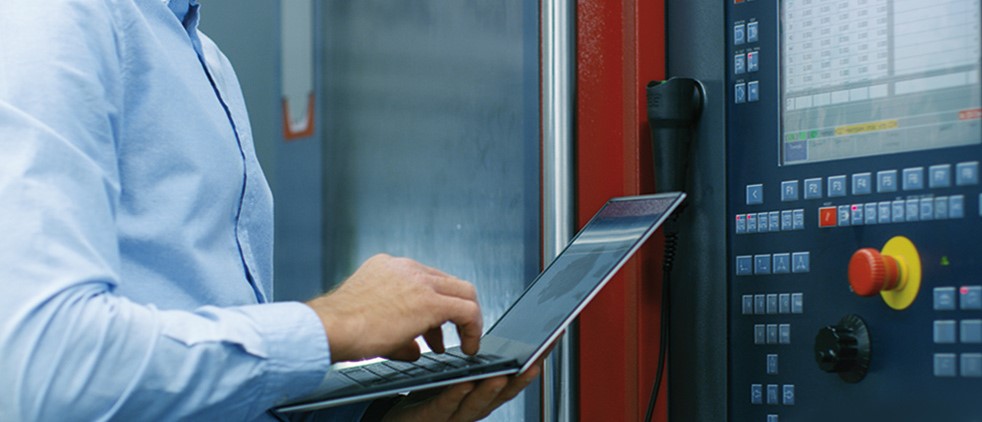The challenges of modern aseptic packaging systems: low production costs, high quality and the importance of maintenance
Contents of the article
1. THE FACTORS THAT CHARACTERISE ASEPTIC PACKAGING
2. SERVICE SOLUTIONS AS A MEANS TO ACHIEVING CORPORATE OBJECTIVES
3. THE KEY FEATURES OF MAINTENANCE SERVICES AND CONSEQUENT BENEFITS FOR BUSINESS
4. PREVENTIVE MAINTENANCE: A WAY TO IMPROVE PERFORMANCE AND MINIMISE COSTS AND RISKS
5. IPI AT YOUR SERVICE
Companies that use aseptic carton to pack products, from milk to various fruit juices, are subject to continuous challenges to tackle increasing demands by the global market. In these contexts, each minute of inactivity affects production profitability, which is why machine reliability and efficiency are essential features.
The factors that characterise aseptic packaging
The main factors that characterise the aseptic packaging process are:
- Heat treatment system
- Type of filling machine
- Aseptic primary packaging material
- Secondary packaging line
- Line control and management personnel
The individual contribution of each of these 5 elements is key to achieving corporate objectives in a market where competition is more and more tough.
Their interaction determines the overall process result, which can be measured through an Overall Equipment Efficiency (OEE) value, in which the various factors interact differently.
Ensuring high OEE levels, by mastering the technology and the features that influence its behaviour, means fully understanding of the interactions between the various system components.
This type of expertise is highly specialised and requires industry expertise that is not available in all production contexts.
The greatest cost of improvement is represented by the acquisition of internal know-how through tests, experience and failures.
In the same way, continuous innovation and searching for increasingly advanced solutions that are adequate to needs leads to the search for advanced partners that can guarantee high added value services.
Service solutions as a means to achieving corporate objectives
There is no specific formula to improving performance. The client company’s differing maturity levels may require different support methods: from start-ups, where the client needs constant support during the learning phase, to advanced clients for whom continuous performance improvement requires specific activities based on structured analysis of production data.
The common denominator that all clients must consider to consolidate their business is margin protection, an aspect that is reflected in increasingly lower operating costs in the long term, predictable and stable operating costs in the medium term.
For this reason, a process of continuous improvement is necessary to accompany clients in the evolution from start-up to consolidation in the market.
This process must take into consideration all the elements that enable the optimisation of the operational performance of the packaging lines and, in particular, reduce operating costs.
The Service Solutions that allow the achievement of set objectives must be based on a structured and consolidated product portfolio. This should consist of a series of services aimed at providing the most appropriate support for the needs of each specific client.
Among the services necessary to achieve and maintain the changing business goals that characterise different production contexts we certainly find:
- Maintenance Services
- Spare parts and Consumables
- Upgrades kits
- Plant kit parts consumables
- Training Services
- Installation Services and Expert Service engineering
- Augmented reality (smart glasses for remote assistance)
The key features of maintenance services and consequent benefits for business
Packaging lines represent a substantial investment for companies, but it is also true that their operational capabilities are the key to a successful production.
It is essential that each manufacturing company have a variety of support services available to ensure the reliability of their equipment, avoiding the risk of machine downtime.
Usually, the best Maintenance Service systems include:
- Preventive maintenance
- Corrective maintenance (troubleshooting)
- Production support
- Maintenance management
- Equipment assessment
- Spare Parts & Logistics
- Training
- Line Improvement
The key benefits of maintenance activities concern achieving OEE goals, and can be summarised in:
- Consistent equipment performance
- Equipment availability and reliability
- Operational cost reduction
- Consistent product quality
- Low waste levels
- High competence of operating, maintenance and quality control personnel
Preventive maintenance: a way to improve performance and minimise costs and risks
Doing preventive maintenance doesn't mean waiting until an unexpected stoppage or breakdown occurs.
By closely monitoring equipment functionality and pre-planning downtime, it is possible to isolate issues and make flexible repairs without a lengthy production downtimes. All this translates into the extension of the equipment life and maintaining performance over time.
Preventive maintenance, based on a stable and predefined process, is the main pillar with which the performances keep consistent over time, minimising the unpredictability tied to system downtime caused by malfunctions or breakages.
Good and efficient preventive maintenance enables maintaining product quality levels stable as well as optimising the time available for production.
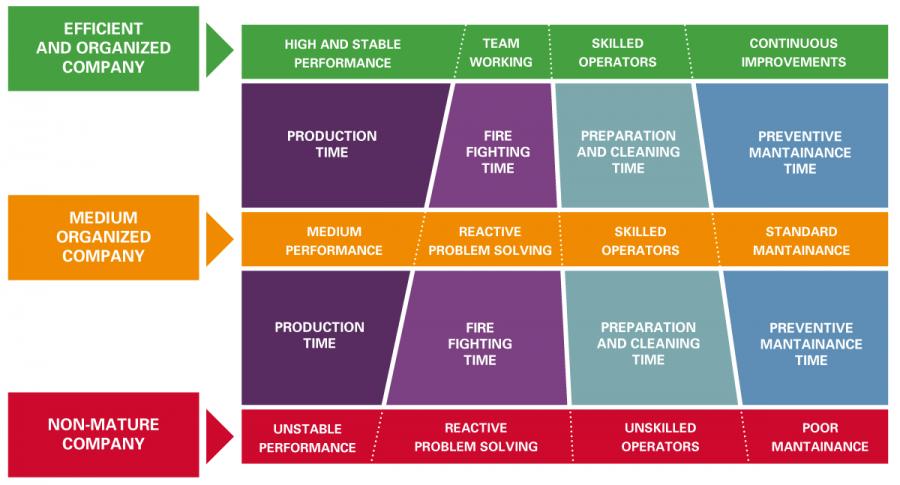
Correct preventive maintenance allows minimising production stoppages generated by failures, maximising the time available for production. The end result consists of high efficiency and stable performance.
The additional advantage tied to preventive maintenance is given by the predictability of operational costs and production efficiency.
These aspects are based on planning system downtimes (scheduling interventions and estimating their duration in advance) rather than from unforeseen events that are extremely harmful to company production.
Although preventive maintenance has an additional cost to be considered, this is largely compensated by the possibility of avoiding damage due to unplanned downtime, production waste and sudden breakdowns.
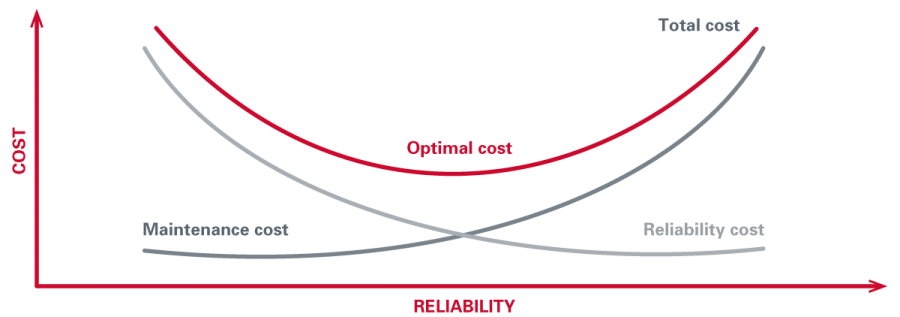
The importance of data collection systems
The reduction in the processing times of production trends, through automatic data acquisition systems, allows an objective and timely implementation of action plans, eventually shared through on-site performance audits, aimed at recovering efficiency or improvements. When there are reductions in performance, it is essential to have a digital system that can analyse the operational data of the lines and find a quick solution for recovering efficiency.
Monitoring takes place through control systems installed on the machine that can collect data at predefined intervals. Information is selected based on identification of the critical functions that must be monitored and processed. All data gathered is managed by computational systems designed to understand and solve anomalies.
The detection of anomalies can also be performed through systems based on augmented and virtual reality, i.e. tools that allow companies to receive constant support without the need to wait for technicians to visit their production facilities.
Service Solutions customised based on needs: the value of Maintenance Agreements
The implementation of Service Solutions that are based on the client’s maturity level and geared to their real needs, enables quickly achieving the operational goals of the business.
The focal point in the predictability of costs associated with maintaining performance and quality is ensured by the fact that a Service Solution (which includes multiple services) is integrated into a fixed-price maintenance contract.
Let’s delve further into this aspect by comparing 3 types of Maintenance Service Solutions to which companies typically resort:
|
COMPANY 1 |
COMPANY 2 |
COMPANY 3 |
|
|
How do they maintain their production line? |
No maintenance agreement |
Standard agreement |
Full service pack agreement |
|
How does the company behave when an unscheduled stoppage occurs? |
It fixes it autonomously and in emergency |
It requests an intervention to IPI |
IPI's core team arrives straight away to fix it |
|
Uptime |
 |
 |
 |
|
How much does the stoppage cost to the company's production? |
The cost of an emergency intervention |
The cost of a corrective intervention |
Zero: corrective maintenance is included in the agreement |
|
How long does it take before the equipment is restarted? |
A lot |
A little |
Very little |
|
How do the operators skills develop? |
Independently |
Along with IPI Group core team |
On-the-job, since the coaching is part of the agreement |
|
How does the company deal with troubleshooting? |
Reactively only when a problem occurs |
Diagnostic visits are available on demand |
Diagnostic visits are included in the agreement |
|
How’s the company's OEE? |
 |
 |
 |
|
How are its costs over time? |
Irregular |
Linear, plus the cost of corrective intervention |
Linear during the agreement duration |
|
No maintenance pack:
|
|
|
Invest in maintenance: what does it mean for the production?
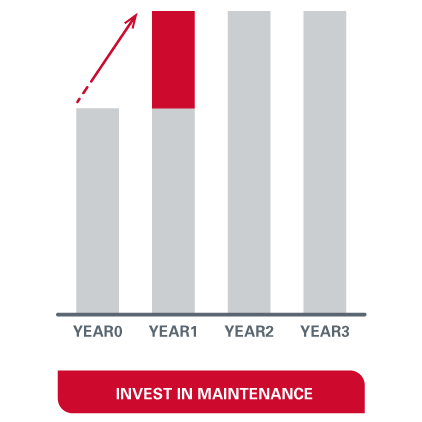
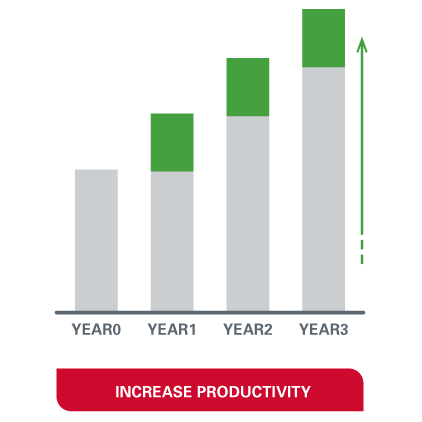
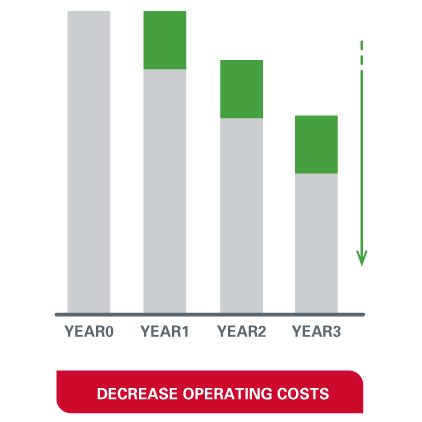
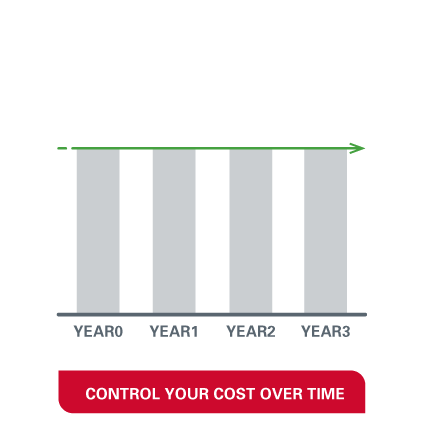
IPI at your service
IPI boasts of a portfolio of services that enable creating a highly custom solution for all types of clients.
Maintenance services for packaging lines such as preventive maintenance are essential for maintaining top-level performance. This requires an integrated approach to maintenance, which IPI can offer.
Indeed, IPI works synergistically with clients, to better understand their specific needs and offer suitable strategic planning, which takes the form of custom maintenance and ongoing support.
The highly specialised service team helps to maximise productivity performance while reducing operating costs.
More in general, IPI’s tailored services optimise production processes and ensure product quality throughout the life cycle of production lines.
Contact us for more information on offers regarding the various support services offered by IPI!
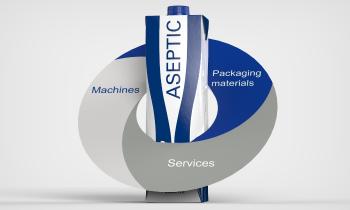 ASEPTIC SOLUTIONS PROVIDER
ASEPTIC SOLUTIONS PROVIDER
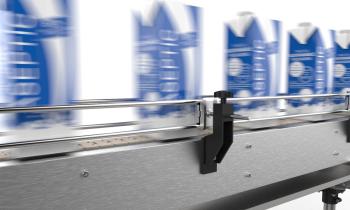 FILLING EQUIPMENT
FILLING EQUIPMENT
